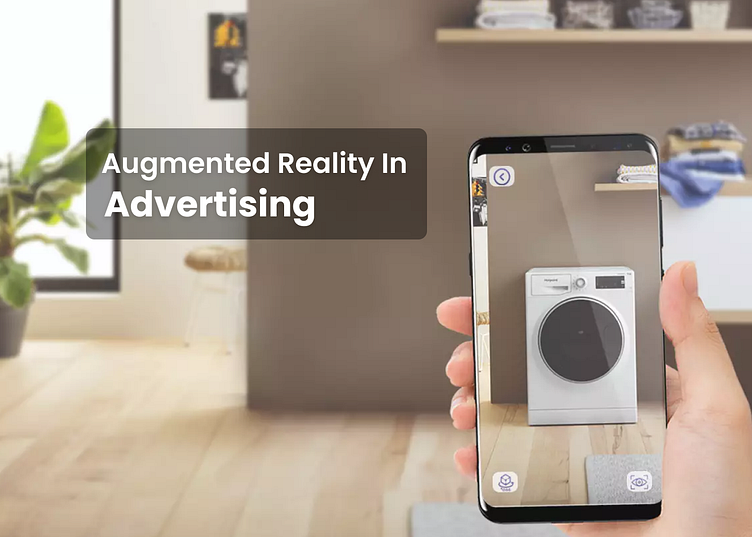Augmented Reality in Advertising: All You Need to Know
The advertising industry is continually evolving, and as technological innovation continues to captivate the world, marketers are at the forefront of a new frontier. Augmented reality (AR) advertising is not just a glimpse into the future; it's here and now, reshaping traditional strategies to create immersive, interactive, and highly engaging brand experiences. This form of digital wizardry has the potential to revolutionize marketing as we know it.
A Window into the Invisible
Augmented reality is more than a digital overlay on the real world; it's a portal to a realm that exists alongside it. Through the lenses of our smart devices or AR glasses, we witness a new reality—an enhanced one—where products come to life, information is dynamic, and imaginations are unbound.
AR has the power to bring still images and conventional advertisements into a new dimension, where they become the stage for a dynamic showcase. Imagine strolling through a city equipped with AR technology. As you pass storefronts, a simple point of your phone transforms the glass into a video advertisement. You watch a new pair of sneakers walk and run, their design adapting to each step and every angle.
The Immersive Edge
Marketers are always seeking the "next big thing" that will captivate audiences. AR provides an innovative platform to create experiences that captivate, educate, and most crucially—convert. Here, the creator can fully immerse the consumer within the brand's narrative.
For instance, a furniture company can allow customers to see how a couch would look in their living room before they make a purchase. A skincare brand can leverage AR to demonstrate the effects of their products on a customer's skin, without a physical sample ever touching their face. These experiences not only enhance customer engagement but also foster a greater connection to the brand as it becomes an active participant in the consumer’s life.
Data-Driven and Personalized
Augmented reality is not just a gimmick—its true power lies in the depth of insights that it can provide to marketers. Every interaction within the AR environment is a data point, allowing for a level of customer behavior analysis that was previously unattainable.
By tracking how users engage with AR ad content, from the products they interact with to the duration of their engagement, marketers can gain a clear understanding of consumer preferences. This data can then be used to create even more personalized and targeted AR experiences, ensuring that each interaction is as relevant and valuable to the consumer as possible.
Breaking Down Barriers with User-Generated Content
AR technology is not just the domain of megabrands and marketing professionals. It's a tool that can be utilized by consumers too, fostering a two-way street of engagement. User-generated AR content has the ability to break down the walls between brand and consumer, co-creating an experience that’s both personal and powerful.
Brands can construct AR filters that allow users to engage with their products in a fun and creative way, sharing their experiences on social media and boosting brand visibility. User-generated AR content not only spreads brand recognition but also builds an active, loyal community around the brand.
The AR Journey to Purchase
From discovery to decision, augmented reality is altering every step of the customer's path to purchase. With AR, physical limitations no longer apply. Consumers can explore products in real-time, in real-world conditions. This level of convenience streamlines the buying process, reducing the uncertainty that often lingers when making an online purchase.
The result is a seamless, engaging shopping experience that transitions effortlessly from the digital realm to the brick-and-mortar point of sale. A consumer can "try on" clothes via an AR app, select what they like, and with a click of a button, have the items shipped to their doorstep.
Challenges and Considerations
While the potential of AR in advertising is vast, it’s not without its challenges. Implementation can be complex, and not all brands have the resources to create sophisticated AR campaigns. Furthermore, ensuring that AR advertising is accessible and inclusive is a crucial consideration. Marketers must also be mindful of the fine line between an immersive experience and a gimmick.
Future Horizons
The era of augmented reality advertising is just beginning. As the technology continues to advance, we can expect even more dynamic, intuitive, and awe-inspiring brand experiences to emerge. With AR glasses now a reality, there’s a strong likelihood that very soon, consumers will be living in the augmented world daily, further blurring the lines between the physical and digital realms.
The intersection of augmented reality and advertising is an exciting space to watch. The brands that can master this technology and create experiences that resonate with their audience will be the leaders in an advertising landscape that’s experiencing its most significant transformation in decades.
PlugXR empowers creators to incorporate augmented reality elements seamlessly. Book a free demo by leveraging the capabilities, designers can unlock new dimensions of creativity and engagement in their projects.
